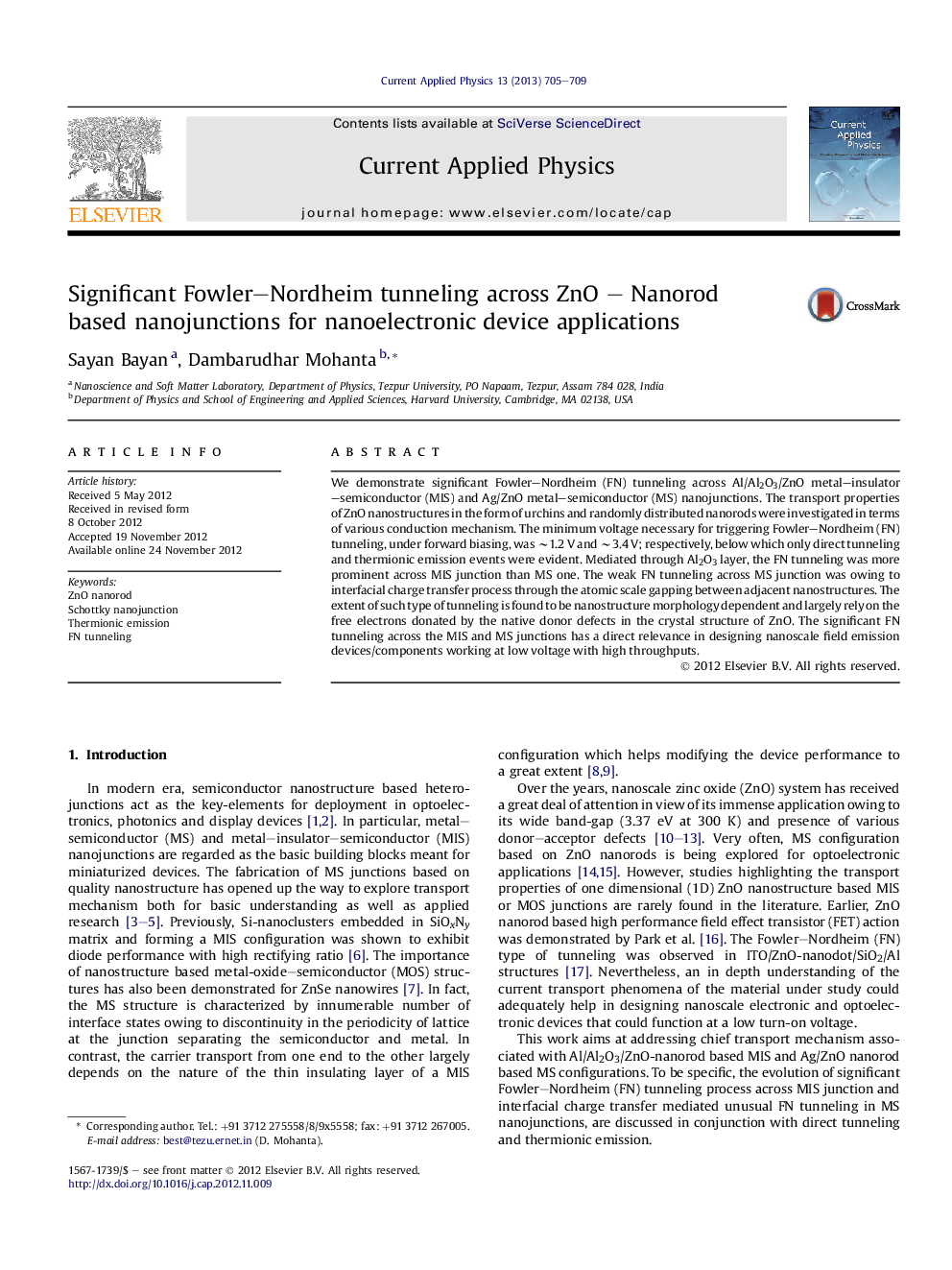| Article ID | Journal | Published Year | Pages | File Type |
|---|---|---|---|---|
| 1786771 | Current Applied Physics | 2013 | 5 Pages |
We demonstrate significant Fowler–Nordheim (FN) tunneling across Al/Al2O3/ZnO metal–insulator–semiconductor (MIS) and Ag/ZnO metal–semiconductor (MS) nanojunctions. The transport properties of ZnO nanostructures in the form of urchins and randomly distributed nanorods were investigated in terms of various conduction mechanism. The minimum voltage necessary for triggering Fowler–Nordheim (FN) tunneling, under forward biasing, was ∼1.2 V and ∼3.4 V; respectively, below which only direct tunneling and thermionic emission events were evident. Mediated through Al2O3 layer, the FN tunneling was more prominent across MIS junction than MS one. The weak FN tunneling across MS junction was owing to interfacial charge transfer process through the atomic scale gapping between adjacent nanostructures. The extent of such type of tunneling is found to be nanostructure morphology dependent and largely rely on the free electrons donated by the native donor defects in the crystal structure of ZnO. The significant FN tunneling across the MIS and MS junctions has a direct relevance in designing nanoscale field emission devices/components working at low voltage with high throughputs.
► Transport properties of ZnO nano-rods and urchins have been investigated. ► Direct tunneling and thermionic emission were evident below the threshold voltages. ► Significant Fowler–Nordheim tunneling was witnessed for MIS junctions over MS ones. ► The weak FN tunneling in MS junction was believed to be due to atomic scale gapping in nanostructures.
